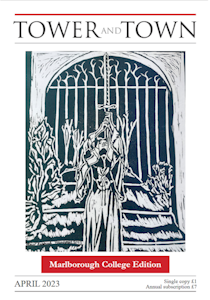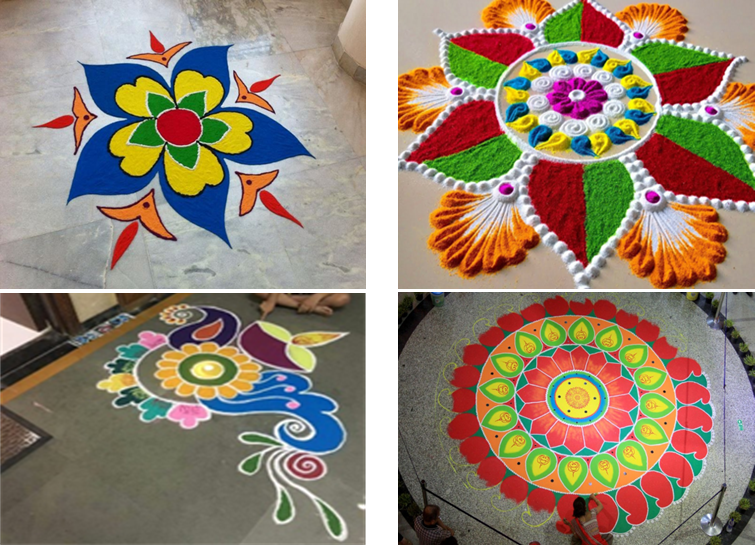

Tower and Town, April 2023 (view the full edition) (view the full edition)How Chalk Is Used In Hindu CultureTraditionally, rangoli is an everyday art of decoration using chalk that originated in India drawn on the entrances of homes. The word, rangoli, comes from the Sanskrit word, rangaavali, which is made up from two words: rang, meaning colour, and aavali, meaning creepers or lines, so the literal translation is “coloured lines”. The most important element of rangoli patterns is their bright colour. The usage of vibrant colours is associated with Hindu festivals, marriage celebrations, auspicious observances and other important milestones and gatherings. Rangoli patterns are often symmetrical and are made up of simple, geometric shapes. They combine straight and curved lines with images taken from nature. The symmetry of these designs is a symbol of prosperity, growth, and good fortune. The designs used are passed down from one generation to the next in order to keep the art form and tradition alive. Each design varies as they are unique to each area or family, reflecting different traditions, folklore, and practices. The major symbols used in Hindu rangoli patterns include lotus flowers, birds, and foliage. There are more specific designs for special occasions. For example, at Diwali, rangoli designs comprise of Hindu deities (Ganesh and Lakshmi), peacocks and round floral shapes. As these motifs are traditional to India, rangoli symbolises India’s rich heritage and that it is a place of festivals and colour. Rangoli is a sand mandala. The word “mandala” in Sanskrit translates as “circle” or “centre”. A mandala is an object of meditation to aid someone with spiritual development. The Hindu tradition focuses on the realisation of the self as one with the divine. The design of a mandala is a geometric pattern. It represents the cosmos metaphysically and symbolically. Mandalas refer to the wholeness of life itself. They act as cosmic diagrams that show the relation to infinity and the world that goes beyond to one’s own mind and body. Mandalas can also be interpreted as symbolic of a spiritual journey through the layers of the rangoli pattern.  Aoife G (L6) |